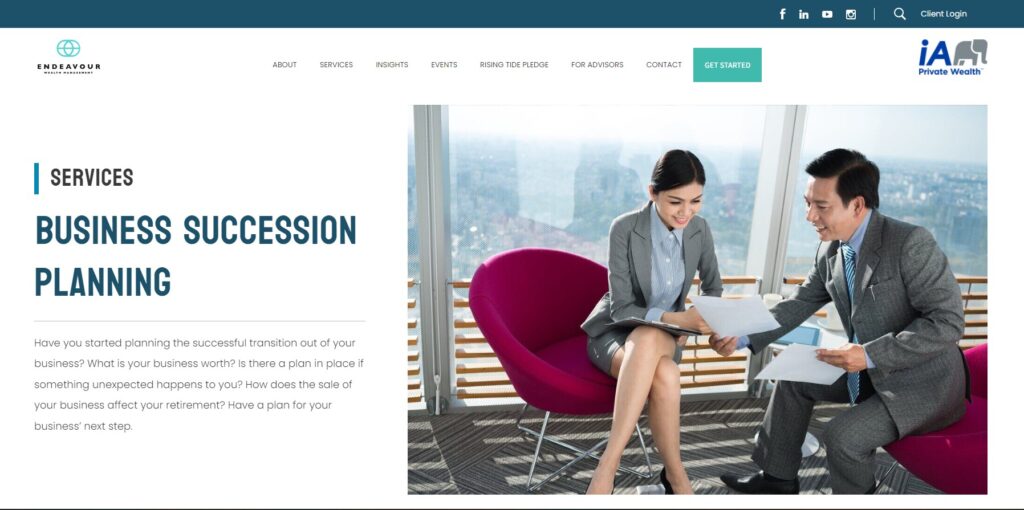
Introduction
In today’s ever-changing business landscape, planning for the future is paramount. Business succession planning ensures that your company can smoothly transition ownership and leadership when necessary. For Schererville businesses, having a robust succession plan in place is crucial for long-term success. In this comprehensive guide, we’ll delve into the intricacies of Schererville business succession planning solutions, providing you with actionable steps to safeguard the future of your enterprise.
Understanding Succession Planning
Succession planning involves identifying and developing internal talent to fill key leadership positions within an organization. It’s not just about selecting a successor; it’s about nurturing a pool of potential leaders and ensuring a seamless transition when the time comes.
Businesses in Schererville can benefit significantly from succession planning solutions tailored to their unique needs. By proactively addressing leadership changes, organizations can mitigate risks and maintain operational continuity.
Planning for the Future
Schererville businesses must adopt a forward-thinking approach to succession planning. By anticipating future leadership needs and identifying potential successors early on, companies can groom their next generation of leaders effectively.
Proactive Talent Development: Invest in training and development programs to nurture leadership skills among existing employees.
Identifying Key Positions: Identify critical roles within the organization and ensure that suitable successors are groomed for these positions.
Creating a Succession Plan: Develop a comprehensive succession plan that outlines the process for identifying, developing, and transitioning key personnel.
The Role of Professional Advisors
Navigating the complexities of succession planning can be daunting. That’s where professional advisors come in. Experienced consultants can provide invaluable guidance and expertise, helping businesses devise effective succession strategies tailored to their specific circumstances.
Partnering with Experts
Partnering with seasoned advisors can streamline the succession planning process and ensure that your business is well-prepared for leadership transitions.
Legal and Financial Expertise: Professional advisors offer legal and financial insights essential for structuring succession plans and navigating tax implications.
Strategic Guidance: Advisors can help align succession planning efforts with broader strategic objectives, ensuring that leadership transitions support long-term business goals.
Mitigating Risks: By leveraging their expertise, advisors help mitigate risks associated with leadership changes, safeguarding the stability and continuity of the business.
Implementing Succession Planning Solutions
Effective succession planning requires a structured approach and meticulous execution. Schererville businesses can follow these steps to implement robust succession planning solutions:

Step 1: Assess Current Talent Pool
Evaluate the skills, capabilities, and potential of existing employees to identify high-potential candidates for key leadership roles.
Internal Talent Review: Conduct a comprehensive review of internal talent, considering factors such as performance, potential, and leadership qualities.
Gap Analysis: Identify skill gaps and development needs among potential successors, and tailor training programs accordingly.
Succession Planning Committee: Establish a dedicated committee responsible for overseeing the succession planning process and monitoring progress.
Step 2: Develop Leadership Competencies
Invest in leadership development initiatives to equip potential successors with the skills and competencies needed to excel in leadership roles.
Leadership Training Programs: Offer training programs focused on developing essential leadership competencies such as communication, decision-making, and strategic thinking.
Mentorship and Coaching: Pair high-potential employees with seasoned mentors who can provide guidance, support, and valuable insights.
Rotational Assignments: Provide opportunities for aspiring leaders to gain diverse experiences through cross-functional rotations and special projects.
Step 3: Identify Successors and Create Development Plans
Identify suitable successors for key leadership positions and create individualized development plans to groom them for future roles.
Successor Identification: Assess potential successors based on factors such as performance, potential, and cultural fit, and select candidates who align with the organization’s values and vision.
Development Planning: Create tailored development plans for selected successors, outlining specific goals, milestones, and developmental activities.
Feedback and Performance Reviews: Provide ongoing feedback and performance evaluations to track the progress of potential successors and adjust development plans as needed.
Step 4: Communicate and Engage Stakeholders
Effective communication is essential for garnering support and alignment throughout the succession planning process.
Transparent Communication: Keep employees informed about the organization’s succession planning efforts, emphasizing the importance of talent development and career growth opportunities.
Stakeholder Engagement: Engage key stakeholders, including senior leadership, board members, and employees, in discussions about succession planning goals, strategies, and outcomes.
Feedback Mechanisms: Solicit feedback from stakeholders to ensure that succession planning initiatives are aligned with organizational needs and priorities.
Step 5: Monitor and Evaluate Progress
Regular monitoring and evaluation are critical for assessing the effectiveness of succession planning initiatives and identifying areas for improvement.
Key Performance Indicators: Define key performance indicators (KPIs) to measure the success of succession planning efforts, such as employee retention rates, leadership pipeline strength, and promotion rates.
Progress Reviews: Conduct periodic reviews to evaluate the progress of succession planning activities, identify challenges, and make necessary adjustments to the plan.
Continuous Improvement: Continuously seek opportunities to enhance succession planning processes and practices based on feedback and lessons learned.
Step 6: Adapt to Changing Needs
Succession planning is an ongoing process that requires adaptability and agility to respond to evolving business needs and market dynamics.
Flexibility: Remain flexible and open to adjusting succession plans in response to changes in organizational priorities, leadership requirements, or external factors.
Scenario Planning: Anticipate potential disruptions or contingencies that may impact succession planning efforts, and develop contingency plans to address them.
Continuous Learning: Stay informed about emerging trends, best practices, and innovations in succession planning to ensure that strategies remain relevant and effective.
Frequently Asked Questions (FAQs)
Q: What are the key benefits of implementing succession planning solutions for Schererville businesses?
A: Succession planning solutions help Schererville businesses mitigate risks associated with leadership transitions, maintain operational continuity, and foster a pipeline of future leaders.
Q: How can professional advisors assist Schererville businesses with succession planning?
A: Professional advisors offer expertise in legal, financial, and strategic matters, guiding businesses through the complexities of succession planning and ensuring compliance with regulatory requirements.
Q: What steps should Schererville businesses take to identify potential successors for key leadership roles?
A: Schererville businesses should assess the skills, capabilities, and potential of existing employees, create individualized development plans for high-potential candidates, and provide opportunities for growth and advancement.
Q: How can transparent communication facilitate successful succession planning efforts?
A: Transparent communication fosters trust, engagement, and alignment among stakeholders, ensuring that succession planning initiatives are understood and supported throughout the organization.
Q: What role does ongoing monitoring and evaluation play in the success of succession planning initiatives?
A: Ongoing monitoring and evaluation allow businesses to track progress, identify areas for improvement, and make informed decisions to optimize succession planning processes and outcomes.
Q: How can Schererville businesses adapt their succession plans to address changing needs and circumstances?
A: Schererville businesses should remain flexible, anticipate potential disruptions, and continuously evaluate and adjust succession plans to align with evolving organizational priorities and market conditions.
Conclusion
Achieving success in Schererville business succession planning requires a strategic, proactive approach. By investing in talent development, engaging professional advisors, and implementing structured processes, businesses can ensure a smooth transition of leadership and position themselves for long-term growth and sustainability. Embrace the opportunity to plan for the future, and empower your organization to thrive amidst change.



